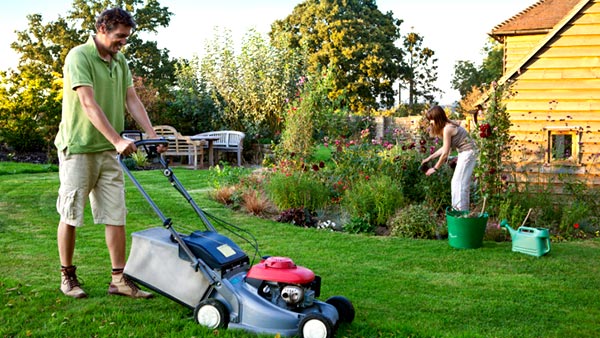Keeping a lawn green and lush can be a point of pride and a way to expand your living space to your yard. But lawns need to be mowed, and serious injuries can occur if you aren’t careful while mowing.
Every year more than 300,000 people are treated in hospitals and medical clinics for lawn mower-related injuries, according to the U.S. Consumer Product Safety Commission. More than 10,000 of those injuries involve children, including teens through age 18.
Here are some safety tips to prevent you or your children from being injured while mowing.
Before Mowing
- Have the lawn mower serviced before the first use of the season to make sure it is in good working order.
- Wear sturdy shoes for traction and to prevent contact with the blade – no flip flops.
- Wear protective eyewear to minimize the damage from being struck by objects thrown from the blade.
- Do not operate without the grass catcher, discharge chute, or other safety devices in place and working.
- If the lawn is wet, wait. Wet grass is slippery and can clog the chutes with clumps that you may be tempted to clear with your hand.
- Make sure children are not in the area.
- Check the lawn for stones, toys and other objects that can be discharged from the mower and turned into dangerous projectiles. Researchers at the University of Arkansas found objects can be launched at speeds above 170 miles per hour and thrown up to 50 feet.
While Mowing
- Pull the mower backwards or mow in reverse only when absolutely necessary. When mowing in reverse, be sure to check for children or obstacles behind you.
- Always respect the power of the blade. According to the American Academy of Orthopaedic Surgeons, the energy transferred by contact with a typical lawn mower blade is the equivalent of being shot in the hand with a pistol.
- Turn off the mower and wait for the blade(s) to come to a complete stop before removing the grass catcher, unclogging the discharge chute, inspecting or repairing the mower, or when crossing gravel paths, roads or other areas.
- If there is debris in the mower, remove it with a stick or broom handle. Never use your hands or feet.
- Drive up and down slopes – never across – when using a riding mower. Do not use riding mowers on steep slopes. In general, never mow a slope greater than 20 degrees with a walk-behind mower or a slope more than 15 degrees on a riding mower. Zero-turn radius riding mowers are safest on slopes of less than 10 degrees.
- If using a riding mower, never allow children as passengers.
Make your lawn look great, but take precautions to protect yourself and your family while you mow.
More Information
Consumer Product Safety Commission Lawn Mower Safety fact sheet
This loss control information is advisory only. The author assumes no responsibility for management or control of loss control activities. Not all exposures are identified in this article.

